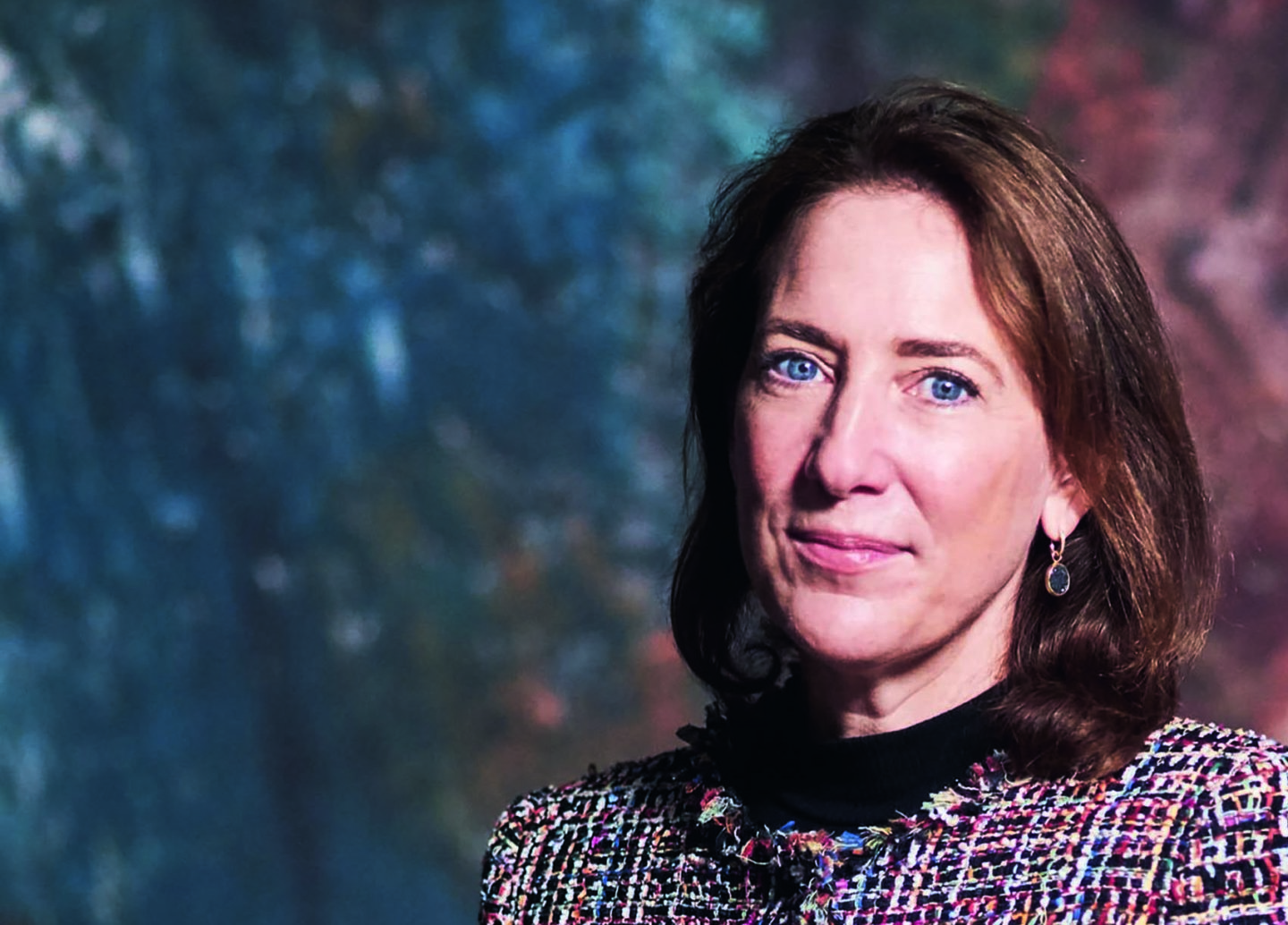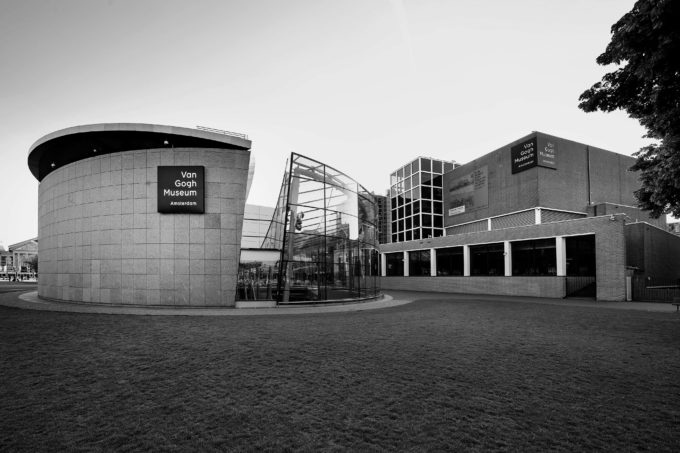“For me the mantra was the awful cliche ‘never waste a good crisis’. So I thought: ‘OK, a lot of this is really painful and really horrible, but there are some advantages, so if you want to make a change, this is the moment to do it’,” she tells me from her home in Amsterdam via Zoom.
When I ask about the biggest lesson she has learned during the crisis, she responds: “Use the moment. Don’t waste (it). Don’t shilly-shally. Just move forward.”
Nevertheless, the lockdown-related closure of the museum presented Gordenker with some unexpected financial challenges very early in her leadership. The Van Gogh Museum normally generates almost 90% of its income itself – from ticket sales, merchandizing, licensing and sponsoring – a very high figure for a museum, so this funding shortfall required immediate action. “When the visitors stopped coming, if we hadn’t done anything, we would have been losing something more than €4m a month,” says Gordenker.
The institution therefore had to take a number of steps to manage its finances – halting building projects, reconsidering its exhibition pro- gram, leaving vacancies unfilled and laying off temporary staff. It also received emergency financing from the Dutch government. “It’s good that we moved quickly and with that extra assistance, we were able to get through the year without a major disaster.”
The museum also would not have been able to get through the crisis without the support of its corporate partners and private donors, who helped it to continue some important projects that otherwise would not have been possible. Gordenker strengthened long-term partnerships with companies including ASML, Van Lanschot, Hyundai and DHL Express, while its Global Circle business club generates further funding for museum programs through its corporate membership scheme. The continuation of already existing sponsorships and attracting new partners are more crucial than ever.
Gordenker had already embarked on putting together a longer-term strategic plan for the museum before the crisis broke, focusing on clarifying the institution’s core mission, which she sees as an essential exercise for any non-profit organisation.
“All that money that you make serves a purpose and you have to define that,” she says. To Gordenker, it was fairly obvious in discussions around the plan that “the essence of the museum was its collection of Van Gogh’s paintings, drawings and letters and its research programs on the artist and the art of his time,” but the crisis also highlighted a need to make a shift in terms of its target audience.
“It really helped to sharpen the mind, so it’s informed choices that we’ve made in terms of programming, it’s informed a reorientation towards our local audiences, which I think is an important factor in the long term, and I think it’s given us a new sense of purpose and direction,” she says.
The Van Gogh Museum has been extremely successful in attracting large numbers of visitors – more than two million a year before the crisis – but there was a growing feeling that it also needed to focus more on the scholarly aspects of its role and on engaging with groups who would not traditionally have been drawn to the museum.
The board’s mandate in the job description for the director’s position was to find an individual that could drive a good, healthy balance be- tween the artistic and the commercial sides of the museum. The board hugely appreciates all that was done in the past, but also felt that per- haps the commercial and artistic sides of the museum needed to work more closely together.
Gordenker has also accelerated the drive to diversify the museum’s clientele, upping the pace on an initiative that started prior to the pandemic.
“I set it out there, right in the beginning, before the crisis. I started conversations with the management team, with departmental heads and with the board and we decided to, somewhat fashionably, orient more towards diversity. What we mean by that is not necessarily trying to get as many people through the door as possible but to think about who we’re not reaching – who are the people that are not coming,” she says.
However, the crisis led to a sharp fall in international tourism reinforcing the case for an increased focus on attracting Dutch visitors.
“All of a sudden, at a moment when I’m thinking about how we’re going to reorient to our local visitors, this crisis happens so that really helped sharpen our minds,” she says. “If you can’t fall back on your local visitors when people aren’t traveling, it really illustrates the need to address this. Even though the museum attracted many Dutch visitors (third in the Netherlands after the Rijksmuseum and the Stedelijk Museum), it was seen by many Dutch people as a touristy place where you might go once, so that was a perception thing we needed to address, and this is a very good time to do that,” she says.
We want to make sure that we engage with young people so that there will be an audience in the future
Meanwhile, she asked her marketing team to come up with a clear picture of who the museum’s target audiences should be among Dutch people. This exercise has just been completed and will inform the museum’s marketing strategy, communications and the way it presents its exhibitions and educational activities.
A primary focus will be on young Amsterdammers with a bicultural background. The museum’s Van Gogh Connects four-year research program, set up in 2017 in partnership with Fonds21, already aims to reach out to this target group. “Our population is changing and this is going to be a major part of the Dutch population going forward, and we want to make sure that we engage with young people, so that there will be an audience in the future,” says Gordenker.
The museum also works with an advisory group it calls the Beeldbrekers (Reframers), a panel of young, bicultural professionals who provide guidance on how to become more inclusive. “They were quite critical of us during the Black Lives Matter explosion, and that’s one of those instances where, in retrospect, we probably moved a little slowly and we said: ‘OK. Teach us. Tell us what we should do, how should we do this next time’,” says Gordenker.
The museum also teamed up with Amsterdam-based clothing label Daily Paper to explore how art and fashion could bring people from different backgrounds together. The company is heavily involved in inclusion and diversity issues and last year launched two fashion lines featuring a selection of Van Gogh’s masterpieces.
The corporate partners of the museum are also actively engaged in its drive for greater inclusiveness. In October, Hyundai helped it to organize a Connection Day for vulnerable elderly people, another target group, involving workshops at various locations in Amsterdam. Meanwhile, ASML funded Master & Masterpieces, a programme of lessons for school- children on the role of ultraviolet radiation in research on Van Gogh’s paintings.
The museum’s first exhibition on its reopening, labeled Here to Stay, will focus on its acquisitions over the past 10 years and will involve the stories of modern-day Amsterdammers. Over the summer, in an effort to reach out locally, the museum launched a competition called Van Gogh
Museum Lends, enabling local people to have high-end 3D reproductions of some of the works in its collection out on loan. “I took one to a lovely woman who is a nurse working with Covid patients and she had a reproduction of Almond Blossom in her sitting room for two weeks,” says Gordenker.
The coronavirus crisis has meant that a number of long-term planning exercises have had to be compressed into a very intense year. In addition to the strategic review, Gordenker has also overseen the drafting of a four-year financial plan and a reorganisation of the management structures. “I was doing these three fairly intense exercises all in parallel with each other and that was quite difficult because one thing informs the other, so I felt like I had all these balls in the air, but we got there in the end,” she says.
While all this has been going on, and because the museum takes the government recommendations on COVID-19 very seriously, Gordenker has been largely working from home and seeking to support staff as best she can. For many staff who saw working from home as an adventure during the first lockdown, it has now become more of a challenge and the management has stepped up efforts to keep in touch with staff through video logs, live Q&A sessions and tips on work-life balance.
Gordenker is thankful that she used her first six weeks in the job to meet all of the employees in person and regularly calls individual staff members to see how they are coping, but she acknowledges that the museum cannot eliminate the uncertainty many people are feeling as a result of the global situation.
I feel very optimistic going forward …
I think that everyone is realising how much our cultural institutions enrich our lives
“I see this is a period to get through and I feel very optimistic going forward. It was a bit of a fright and a struggle to get through this tough time but I’ve had enough support, both on the home front and the work front, and my direct colleagues have obviously been a huge help,” she says.
She will also have been aided by the experience gleaned in her previous role as head of the Mauritshuis museum in The Hague. When she joined the Mauritshuis she made the big leap from being a curator to a muse- um director with barely any management or fundraising experience, so this involved a very steep learning curve.
With the benefit of this experience, she says a key difference between the financial crisis of 2008 and the current pandemic is the public attitude to the museum sector.
“In 2008 there was an atmosphere of people saying, ‘Why do we need culture? It’s really a hobby and it’s not essential.’ And we’re not having that conversation this time around, so I think that everyone is realizing how much our cultural institutions enrich our lives.”






